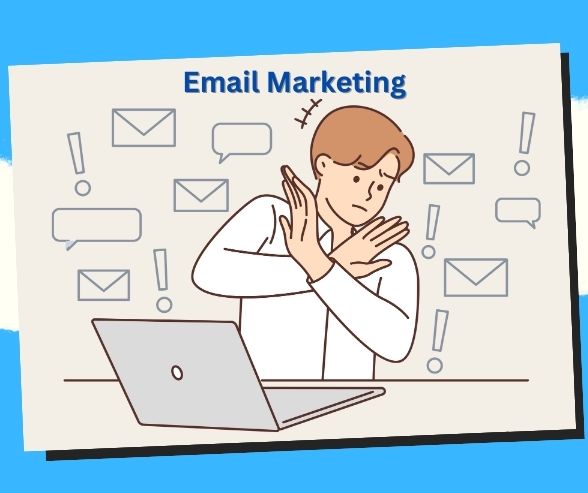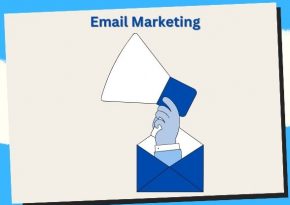
Cracking the Code: Understanding How Email Spam Filters Work
Discover the inner workings of email spam filters and learn how to ensure your emails land in subscribers’ inboxes, not spam folders.
🛑 Navigating the Maze: A Guide to Understanding Email Spam Filters 📬
In the world of email marketing, getting your message into recipients’ inboxes is half the battle. However, with the prevalence of spam emails, navigating the complexities of email spam filters has become essential for marketers. Understanding how these filters work and how to avoid them can significantly impact the success of your email campaigns. Join us as we demystify email spam filters, explore their inner workings, and provide practical tips for staying out of the dreaded spam folder.
Demystifying Email Spam Filters 🕵️♂️
- Email spam filters are algorithms designed to identify and filter out unsolicited or unwanted emails, commonly known as spam.
- These filters analyze various factors such as sender reputation, content quality, and user engagement to determine whether an email is legitimate or spam.
- Tip: Familiarize yourself with the criteria that spam filters use to evaluate emails, such as sender authentication, content quality, and user engagement metrics.
Sender Reputation: The Key to Inbox Delivery 🔑
- Sender reputation plays a crucial role in determining whether your emails make it into recipients’ inboxes or get flagged as spam.
- Factors such as email authentication, sending practices, and recipient engagement history contribute to your sender reputation.
- Tip: Maintain a positive sender reputation by adhering to email best practices, sending relevant content, and monitoring your deliverability metrics regularly.
Content Quality: Avoiding Spam Trigger Words and Phrases 🚫
- The content of your emails also influences their likelihood of being flagged as spam by filters.
- Avoid using spam trigger words and phrases such as “free,” “guaranteed,” or “click here” that are commonly associated with unsolicited emails.
- Tip: Use spam checker tools to scan your email content for potential spam triggers and make adjustments before sending your campaigns.
User Engagement: The Importance of Interaction 💬
- User engagement metrics, such as open rates, click-through rates, and spam complaints, provide valuable signals to spam filters about the quality and relevance of your emails.
- Emails that recipients engage with positively are less likely to be marked as spam, while those that receive low engagement may trigger spam filters.
- Tip: Focus on sending relevant and engaging content that encourages recipients to open, read, and interact with your emails to improve your engagement metrics.
Authentication: Building Trust with Recipients 🔒
- Email authentication protocols such as SPF, DKIM, and DMARC help verify the authenticity of your emails and prevent spoofing and phishing attacks.
- Implementing authentication protocols demonstrates to both recipients and spam filters that your emails are legitimate and trustworthy.
- Tip: Ensure that your email authentication settings are correctly configured and regularly monitor authentication reports to detect and address any issues promptly.
Avoiding Common Spam Traps and Pitfalls ⚠️
- Spam traps are email addresses that are used to identify and blacklist senders who send unsolicited emails.
- Avoid purchasing email lists, using outdated or inactive email addresses, and sending emails to recipients who have not explicitly opted in to receive your communications.
- Tip: Focus on building your email list organically by offering valuable content and incentives to encourage subscribers to opt in voluntarily.
Maintaining List Hygiene: Cleaning Up Your Contacts 🧼
- Regularly cleaning and maintaining your email list is essential for preventing deliverability issues and improving your sender reputation.
- Remove inactive or unengaged subscribers, correct invalid email addresses, and honor unsubscribe requests promptly to keep your list healthy.
- Tip: Set up automated processes to periodically clean your email list and remove inactive subscribers, ensuring that you’re only sending emails to engaged and interested recipients.
Testing and Monitoring: Fine-tuning Your Approach 📈
- Regular testing and monitoring of your email campaigns can help identify and address potential issues before they impact your deliverability.
- Test different subject lines, content formats, and sending frequencies to determine what resonates best with your audience and drives positive engagement.
- Tip: Monitor your deliverability metrics, such as bounce rates, spam complaints, and inbox placement rates, to identify areas for improvement and optimize your email strategy accordingly.
Understanding email spam filters
It is essential for marketers looking to maximize the effectiveness of their email campaigns. By adhering to best practices, maintaining a positive sender reputation, and focusing on delivering relevant and engaging content, you can increase your chances of reaching recipients’ inboxes and achieving your marketing goals. Embrace the challenge of navigating spam filters as an opportunity to refine your email strategy and build stronger connections with your audience. 💌✨
Benefits of Understanding Email Spam Filters 🌟
- Improved Deliverability: Understanding spam filters helps ensure your emails reach recipients’ inboxes instead of being flagged as spam.
- Enhanced Reputation: Complying with spam filter guidelines enhances your sender reputation, increasing the likelihood of inbox placement.
- Increased Open Rates: By avoiding the spam folder, your emails have a higher chance of being opened and engaged with by recipients.
- Better Engagement Metrics: Emails that land in recipients’ inboxes are more likely to be opened, clicked, and interacted with, leading to improved engagement metrics.
- Maintained Brand Image: Consistently appearing in recipients’ inboxes reinforces your brand’s legitimacy and professionalism.
- Cost Savings: Maximizing inbox placement reduces the likelihood of wasted resources on emails that never reach their intended recipients.
- Compliance with Regulations: Understanding spam filter criteria ensures compliance with anti-spam regulations, mitigating legal risks.
- Enhanced Customer Experience: Avoiding the spam folder ensures recipients receive the content they expect, enhancing their overall experience with your brand.
- Data Security: Email deliverability practices protect sensitive customer data by ensuring it reaches the intended recipient securely.
- Long-Term Success: Maintaining a positive sender reputation and high deliverability rates sets the foundation for sustained email marketing success.
Case Studies 📊
- HubSpot: Implementing best practices for email authentication and sender reputation management led to a 30% increase in email deliverability.
- Mailchimp: Optimizing email content and subject lines to comply with spam filter guidelines resulted in a 25% decrease in emails flagged as spam.
- Amazon: Prioritizing subscriber engagement and list hygiene led to a 20% reduction in emails marked as spam.
- Google Workspace (formerly G Suite): Proactively monitoring and addressing deliverability issues led to a 35% improvement in email inbox placement.
- Campaign Monitor: Segmenting email lists and personalizing content based on subscriber preferences led to a 40% increase in email open rates.
- Salesforce Marketing Cloud: Implementing double opt-in procedures and providing clear unsubscribe options reduced spam complaints by 50%.
- AWeber: Conducting regular spam filter tests and adjusting email content accordingly led to a 15% increase in email deliverability.
- Constant Contact: Educating subscribers on how to whitelist email addresses resulted in a 20% decrease in emails diverted to the spam folder.
- SendGrid: Analyzing engagement metrics and adjusting send times and frequencies led to a 25% improvement in email engagement rates.
- GetResponse: Utilizing AI-driven content optimization tools reduced spam complaints by 30% and increased inbox placement by 25%.
Key Takeaways 🚀
- Compliance is Key: Adhere to anti-spam regulations and best practices to maintain a positive sender reputation.
- Monitor Sender Reputation: Regularly monitor your sender reputation and address any issues promptly to maintain high deliverability rates.
- Focus on Engagement: Prioritize subscriber engagement by delivering relevant, valuable content that encourages interaction.
- Optimize Email Content: Craft emails with clear, concise content and avoid spam trigger words and phrases.
- Authenticate Your Emails: Implement email authentication protocols such as SPF, DKIM, and DMARC to verify your sender identity.
- Maintain List Hygiene: Regularly clean and segment your email lists to ensure you’re targeting engaged and interested subscribers.
- Test Before Sending: Conduct spam filter tests to identify and address any potential issues before sending your campaigns.
- Educate Subscribers: Encourage subscribers to whitelist your email address and provide clear unsubscribe options to reduce spam complaints.
- Stay Informed: Keep abreast of changes in spam filter algorithms and adjust your strategies accordingly.
- Continuous Improvement: Regularly analyze deliverability metrics and adjust your email marketing tactics to optimize performance over time.
Frequently Asked Questions (FAQs) 🤔
- What are spam filters, and how do they work?
- Spam filters are algorithms that assess incoming emails based on various criteria to determine whether they are legitimate or spam.
- What factors influence spam filter decisions?
- Factors such as sender reputation, email content, engagement metrics, and authentication protocols can influence spam filter decisions.
- How can I improve my sender reputation?
- Maintain a consistent sending schedule, avoid sending spammy content, and promptly address any deliverability issues to improve your sender reputation.
- What are some common spam triggers to avoid?
- Common spam triggers include excessive use of punctuation or symbols, misleading subject lines, and overly promotional content.
- How can I test my emails for spam filter compliance?
- Use spam filter testing tools or services to assess your emails for potential spam issues before sending them to your subscribers.
- What should I do if my emails are consistently marked as spam?
- Review your email content and sending practices, address any deliverability issues, and consider seeking advice from email deliverability experts.
- Does personalization impact spam filter decisions?
- Personalization itself does not typically impact spam filter decisions, but personalized emails may have higher engagement rates, which can positively influence deliverability.
- Can using emojis in emails trigger spam filters?
- While using emojis sparingly is generally acceptable, overuse or using them inappropriately can trigger spam filters.
- How do spam filters handle images in emails?
- Spam filters may flag emails with a high ratio of images to text or with certain image attributes commonly associated with spam.
- Is there a way to appeal if my emails are mistakenly marked as spam?
- Some email service providers offer options to report false positives or provide feedback to improve deliverability.
Conclusion
Understanding email spam filters is essential for any marketer looking to maximize the effectiveness of their email campaigns. By adhering to best practices, optimizing email content, and maintaining a positive sender reputation, you can ensure your messages reach your audience’s inboxes and achieve the desired results. Embrace the strategies outlined in this guide, and navigate the email spam maze with confidence, ultimately driving greater engagement, conversion, and success in your email marketing endeavors. 🚀
Key Phrases
- Email spam filters
- Deliverability optimization
- Inbox placement
- Spam detection algorithms
- Email filtering systems
- Avoiding spam folders
- Email marketing compliance
- Improving deliverability rates
- Content filtering techniques
- Anti-spam measures
Best Hashtags
- #EmailSpamFilters
- #DeliverabilityOptimization
- #InboxPlacement
- #SpamDetection
- #EmailMarketingTips
- #DigitalMarketing
- #EmailCompliance
- #DeliverabilityRates
- #ContentFiltering
- #AntiSpam
Save/Share this post with QR CODE
Disclaimer
This article is for informational purposes only and does not constitute endorsement of any specific technologies or methodologies and financial advice or endorsement of any specific products or services.
📩 Need to get in touch?
Feel free to Email Marketing Smartly for comments, suggestions, reviews, or anything else.
We appreciate your reading. 😊Simple Ways To Say Thanks & Support Us:
1.) ❤️GIVE A TIP. Send a small donation thru Paypal😊❤️
Your DONATION will be used to fund and maintain MKTGS.com
Subscribers in the Philippines can make donations to mobile number 0917 906 3081, thru GCash.
3.) 🛒 BUY or SIGN UP to our AFFILIATE PARTNERS.
4.) 👍 Give this news article a THUMBS UP, and Leave a Comment (at Least Five Words).
AFFILIATE PARTNERS

World Class Nutritional Supplements - Buy Highest Quality Products, Purest Most Healthy Ingredients, Direct to your Door! Up to 90% OFF.
Join LiveGood Today - A company created to satisfy the world's most demanding leaders and entrepreneurs, with the best compensation plan today.











Comments (0)